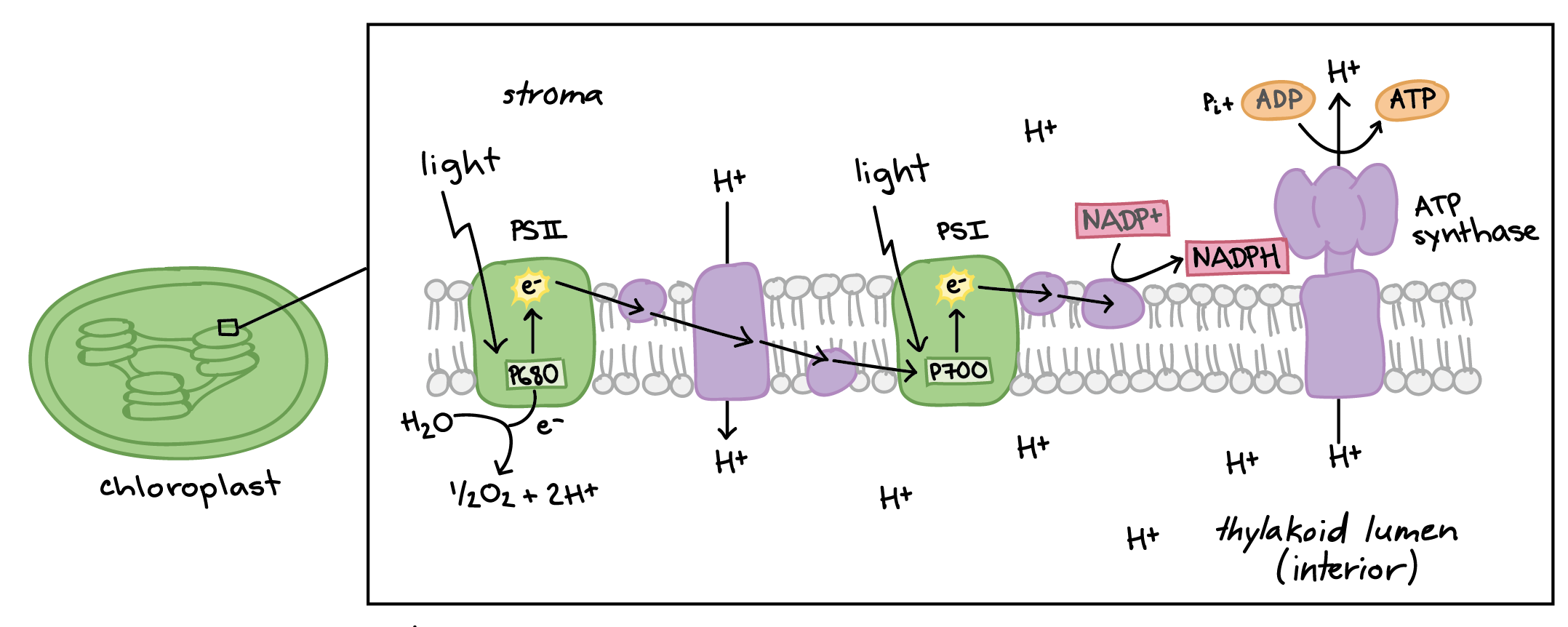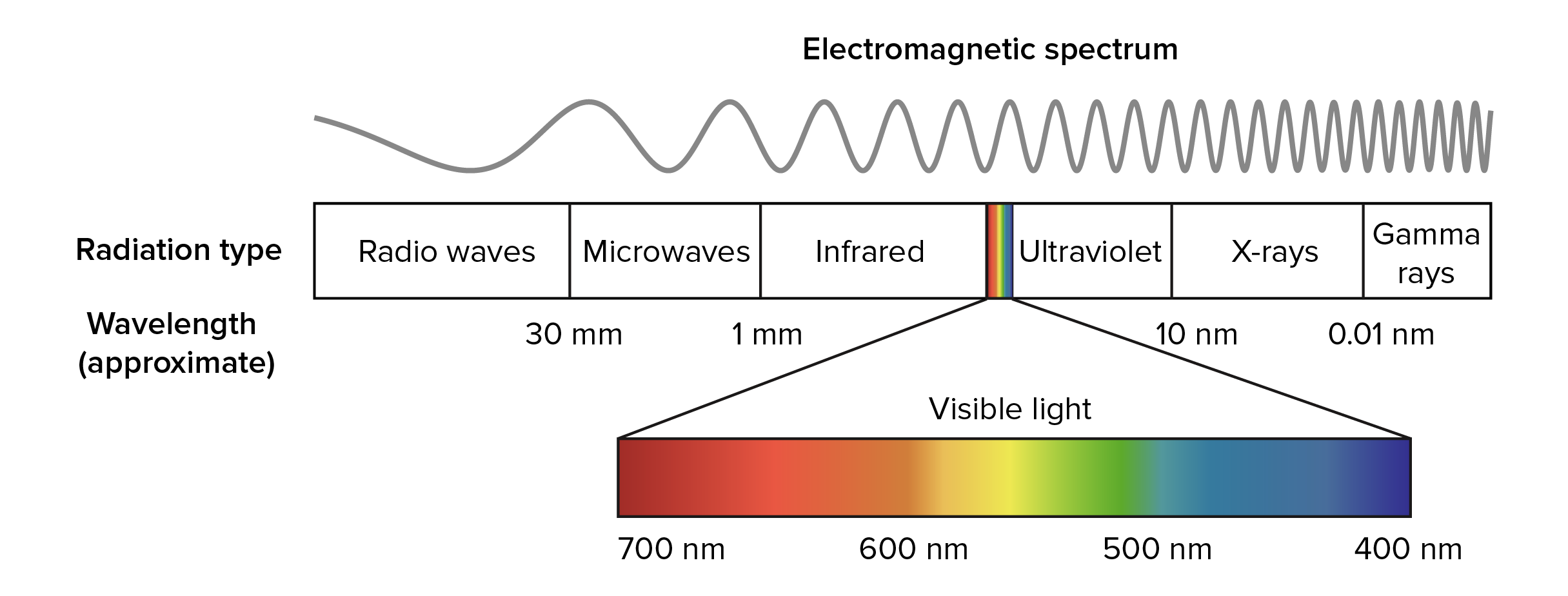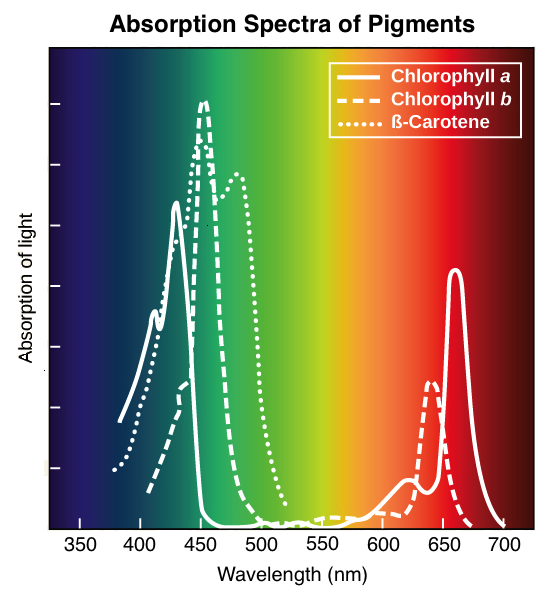Describe How Plants Absorb Photons of Light Energy
This is why plants are green-- chlorophyll absorbs violetred and blueorange light but reflects green light. Answer a The plants have light harvesting pigment molecules that are specialised to absorb sunlight at different wavelengths the most common being near 400 and 700 nm.

Light Dependent Reactions Photosynthesis Reaction Article Khan Academy
Plants on the rainforest floor must be able to absorb any bit of light that comes through because the taller trees absorb most of the sunlight and scatter the remaining solar radiation.

. Chlorophyll in plants is present in two varieties chlorophyll a and chlorophyll b. During photosynthesis energy from sunlight is harvested and used to drive the synthesis of glucose from CO2 and H2O. Plants that commonly grow in the shade have adapted to low levels of light by changing the relative concentrations of their chlorophyll pigments.
The chloroplasts of flowering land plants typically contain at least two photosynthetic pigments chlorophyll a and chlorophyll b that differ in the wavelengths of light they absorb. In the light reactions energy from. View the full answer.
In plants pigment molecules absorb only visible light for photosynthesis. Plants absorb the photons of light with the help of coloured pigment ie chlorophyll which is a special pigment-protein complex situated in thylakoid membrane of chloroplast in the green leaves. The synthesis of chlorophyll pigments from precursor molecules is a process that involves many sequential enzyme-catalyzed steps.
Electron energy level is boosted by absorption of photons light. Reflects or transmits green. When photons strike the chloroplast the energy of the photon is transferred to the pigment molecule thus causing the pigment to go into an electronically.
As shown in Figure 811 the energy not the electron itself is transferred to adjacent pigment molecules by a process called resonance energy transfer. Photosynthesis involves turning light energy into chemical energy glucose so plants grow towards light so that they can absorb more light and therefore produce more energy that they use to grow etc. The light-independent stage also known as the Calvin Cycle takes place in the stroma the space between the thylakoid membranes and the chloroplast membranes and does not require light hence the name light.
Light energy enters the process of photosynthesis when pigments absorb the light. The process of converting light energy into a food source is unique to plants and some algae. No other type of organisms on earth can manufacture its own food.
But sometimes they absorb more energy than they can use and that excess can damage critical proteins. By converting the energy of sunlight to a usable form of potential chemical energy photosynthesis is the ultimate source of metabolic energy for all biological systems. Absorptionreflection eg chlorophyll absorbs redblue.
The photon energy of a median energy photon at 600nm is 207 eV and for 8 moles of such photons the energy absorbed is. Leaves and other green parts of the plant absorb solar energy to be used in photosynthesis Photosynthesis is defined as the synthesis of complex carbohydrates from simple substances like carbon dioxide and water in presence of light. When a pigment molecule absorbs a photon an electron is boosted to a higher energy level.
Light provides the energy required for the synthesis of carbohydrates during photosynthesis. The researcher should use plant with normal enzyme as a control with a plant having mutant enzyme. Chlorophyll is a green pigment contained in thylakoid membranes of chloroplasts that is used in photosynthesis by plants.
Photosynthesis begins in chlorophyll-containing photosystems when the chlorophyll molecules absorb photons of light. Light energy enters the process of photosynthesis when pigments absorb the light. When a plant is exposed to light photons of appropriate wavelength will strike and be absorbed by the pigment-protein complexes arrayed on the thylakoid membranes.
The chlorophyll absorbs energy from the light waves which is converted into chemical energy in the form of the molecules ATP and NADPH. Pigments absorb light energy at certain wavelengthes and reflect the light they dont absorb. 8 moles 6022 x 10 23 mole 207 eV 16x10 -19 JeV 4184 JKcal 381 Kcal.
When sunlight strikes a plant specialized proteins known as light-harvesting complexes absorb light energy in the form of photons with the help of pigments such as chlorophyll. Photosynthesis is the process. Plants require light energy for the process of Photosynthesis by which they convert this light energy to chemical energy.
The visible light seen by humans as white light actually exists in a rainbow of colors. Photosynthesis takes place in two distinct stages. Antennae andor accessory pigments.
Specific pigments absorb specific wavelength. Plants also contain in fewer numbers carotenoid pigments which absorb light mostly in the purpleblue. To protect themselves they convert the excess energy into heat and send it back out.
When this happens the energy of the photon is transferred to the pigment molecule thus causing the pigment to go into an electronically excited state. The chemical reaction that takes place. It takes 114 Kcal to reduce one mole of CO 2 to hexose so the theoretical efficiency is 114381 or 30.
The visible light seen by humans as white light actually exists in a rainbow of colors. In plants pigment molecules absorb only visible light for photosynthesis. This energy passes through other chlorophyll molecules towards the reaction center of Photosystem II.
A pigment is a compound that absorbs a particular wavelength of visible light. Plants rely on the energy in sunlight to produce the nutrients they need. The role of the complex is to directly absorb photons of light.
These photons drive the production of sugar. Only green parts of the plants. This energy is stored by plants in bonds of sugar.
Pigments are embedded in thylakoid membranes. Examples of such pigment molecules are- Chlorophylls Xanthophylls and Caretinoi.

Wavelengths Of Light And Photosynthetic Pigments Article Khan Academy

Wavelengths Of Light And Photosynthetic Pigments Article Khan Academy

Wavelengths Of Light And Photosynthetic Pigments Article Khan Academy
Comments
Post a Comment